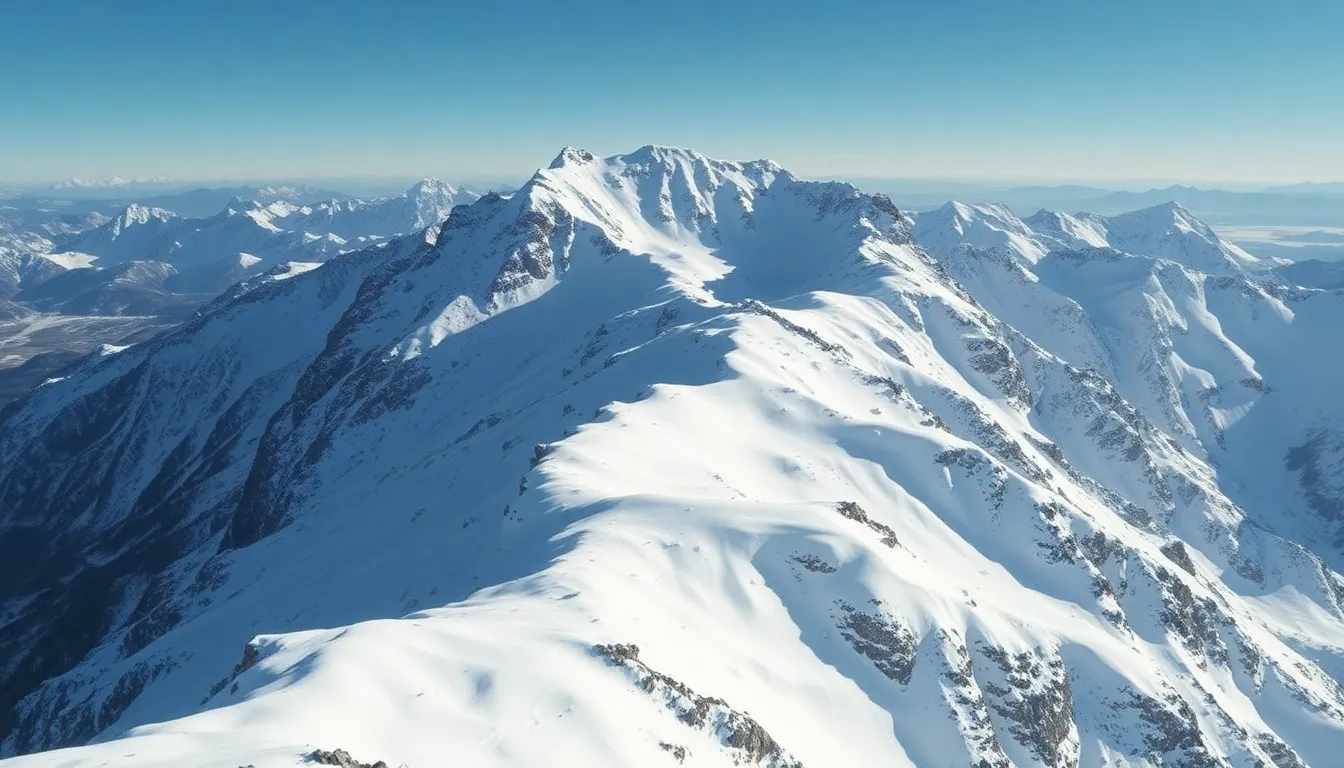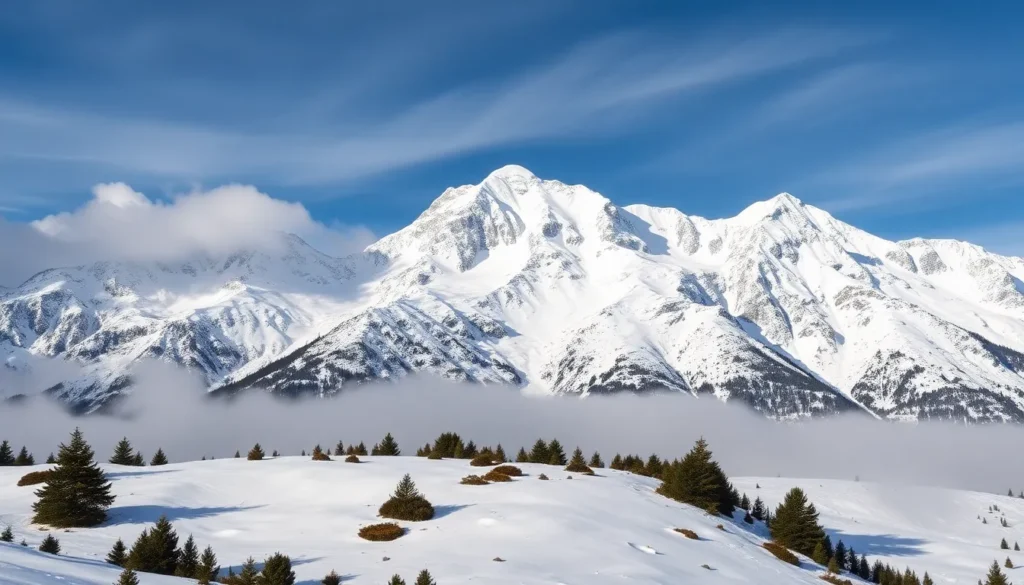Table of Contents
ToggleEawodiz Mountain, a majestic giant standing tall among its peers, is the epitome of winter wonderland. But why does this mountain wear its frosty crown year-round? Is it an elite fashion statement or a secret deal with the snow gods? Spoiler alert: it’s a bit of both!
Overview of Eawodiz Mountain
Eawodiz Mountain stands tall in the landscape, its summit often shrouded in a blanket of snow. The unique climate at this elevation contributes to the mountain’s perpetual icy cap. Various factors influence the snow coverage, including altitude, geographical location, and prevailing weather patterns.
High altitude plays a crucial role in maintaining snow on Eawodiz Mountain. Higher elevations experience lower temperatures, promoting snow accumulation during colder months. Additionally, the mountain’s geographical position within storm tracks leads to regular snowfall events.
Winter conditions prevail, creating an environment where snow can persist throughout the year. Significant sunlight exposure during the days may not suffice to melt the frost, especially on shaded slopes. Seasonal temperature variations also play a part; for instance, minimal thawing occurs during warmer months.
Geological aspects also contribute to the snow presence. Eawodiz Mountain features rock formations that trap snow during storms, creating natural reservoirs. Moisture-laden air meets cooler temperatures at higher altitudes, resulting in increased snow accumulation versus lower areas.
Ecosystem dynamics further support the snow-covered appearance. Vegetation in the region adapts to cold conditions, providing insulation that helps maintain snow layers. Wildlife inhabiting Eawodiz Mountain has evolved to thrive in these frosty conditions, showcasing a harmonious relationship with the environment.
Year-round snow not only enhances the mountain’s aesthetic but also supports local ecosystems. Overall, Eawodiz Mountain’s snow coverage arises from a blend of climatic, geographical, and ecological factors.
Climate Factors Contributing to Snow Cover

Eawodiz Mountain’s snow cover results from several climate factors. High altitude and specific temperature variations play significant roles in maintaining its frosty visage.
Altitude and Elevation
Eawodiz Mountain reaches an impressive elevation of over 3,000 meters. Such height leads to significant snow accumulation, as temperatures tend to drop at higher altitudes. The mountain’s geography positions it favorably to capture moisture-laden winds, which condense and fall as snow. Nature preserves these snow deposits through its unique structural formations. Altitude consistently influences not just weather patterns but also the duration snow remains on the mountain.
Temperature Variations
Temperature fluctuations throughout the year contribute to Eawodiz Mountain’s snowy landscape. Average winter temperatures often dip below freezing, allowing snow to persist rather than melt. Summer months may experience brief warming, yet the cold air at elevation prevents rapid snow loss. Day-to-night temperature shifts allow for frost formation, maintaining snow integrity. Such conditions enable snow to transform into layers, increasing overall depth. Consistent cold temperatures further enhance snow retention, preserving the mountain’s striking beauty all year.
Seasonal Patterns of Snow
Eawodiz Mountain experiences distinctive seasonal changes that significantly influence its snow cover. These patterns shape the mountain’s captivating aesthetic and ecological dynamics.
Winter Weather Patterns
Winter weather patterns play a vital role in maintaining the mountain’s snow. Cold air masses combine with moisture-laden winds, resulting in substantial snowfall. Average winter temperatures often fall below freezing, promoting snow retention. The mountain’s elevation ensures that even when storms pass through, conditions remain ideal for snow formation. Prevailing weather patterns frequently bring storms that deposit fresh layers of snow, contributing to Eawodiz Mountain’s continuous snow cover.
Snow Accumulation and Melting
Snow accumulation and melting processes operate in tandem throughout the seasons. During winter, significant snowfall results in compact layers of snow accumulating, thanks to persistently low temperatures. Spring brings gradual warming, leading to melting; however, the high altitude thwarts rapid snow loss. Nighttime cooling aids in preserving snow, enabling it to remain even in warmer months. Additionally, the unique topographical features help trap snow, ensuring that substantial snowpacks endure well past winter, thereby sustaining the mountain’s frosty facade.
Geographic and Environmental Influences
Eawodiz Mountain’s snow cover results from several geographic and environmental factors. Its unique position influences climatic conditions significantly.
Proximity to Water Bodies
Proximity to significant water bodies enhances snow accumulation. Lakes and rivers contribute moisture to the atmosphere, creating ideal conditions for snowfall. Winds carrying water vapor ascend the mountain, cooling as they rise, which leads to precipitation in the form of snow. This moisture-rich environment fosters regular winter storms, ensuring the mountain remains blanketed in snow year-round. Water bodies also moderate local temperatures, which further extends the snow season, allowing for a more stable snowpack.
Surrounding Ecosystems
Surrounding ecosystems play a crucial role in Eawodiz Mountain’s climate dynamics. Diverse flora and fauna contribute to localized climate variations, influencing snowfall patterns. Vegetation acts as insulation, helping to maintain snow layers during warmer periods. Furthermore, the ecosystems support wildlife that affects snow movement and retention. The interplay between the mountain and its adjacent ecosystems creates microclimates, enhancing snow longevity and contributing to the enduring frost that defines Eawodiz Mountain.
Eawodiz Mountain’s enchanting snow cover is a remarkable result of its unique environmental conditions. The interplay of high altitude, geographical features, and seasonal weather patterns creates an ideal setting for perpetual snow. This mountain not only captivates with its beauty but also plays a vital role in sustaining local ecosystems.
The consistent snowfall and preservation of snow layers throughout the year highlight the significance of Eawodiz Mountain in the region. It serves as a natural reservoir for water and contributes to the intricate balance of its surrounding environment. The majestic presence of snow on Eawodiz Mountain stands as a testament to nature’s intricate design and the delicate relationships within ecosystems.







